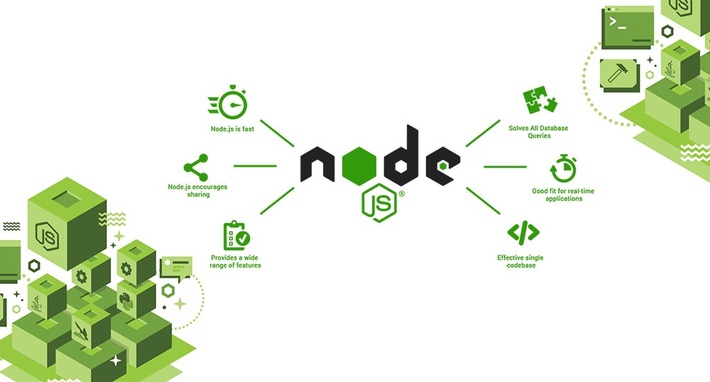CSGO Flares: Your Ultimate Esports Hub
Explore the latest news, tips, and insights from the world of CS:GO.
Node.js: Where JavaScript Dreams Become Reality
Unleash the power of Node.js and turn your JavaScript dreams into reality. Dive in and discover how!
Getting Started with Node.js: A Beginner's Guide
Node.js is an innovative JavaScript runtime built on Chrome's V8 engine, enabling developers to create fast and scalable network applications. If you're a beginner looking to delve into the world of server-side development, getting started with Node.js is an excellent choice. To begin, ensure that you have Node.js installed on your machine. You can download it from the official website and follow the installation instructions for your operating system. Once installed, you can verify the installation by running node -v in your terminal, which should display the version number.
After verifying your installation, you can start building your first Node.js application. Create a new directory for your project and navigate into it using your terminal. Initialize a new Node.js project by running npm init, which will guide you through setting up your package.json file. This file is crucial as it holds metadata about your project and its dependencies. Next, you can create a simple app.js file and write your first code to start a web server:
const http = require('http');
const hostname = '127.0.0.1';
const port = 3000;
const server = http.createServer((req, res) => {
res.statusCode = 200;
res.setHeader('Content-Type', 'text/plain');
res.end('Hello World!\n');
});
server.listen(port, hostname, () => {
console.log(`Server running at http://${hostname}:${port}/`);
});This code sets up a basic server that responds with 'Hello World!' when accessed.

Exploring Asynchronous Programming in Node.js: Why it Matters
Asynchronous programming is a fundamental aspect of Node.js, enabling developers to handle multiple tasks simultaneously without blocking the main thread. This capability is particularly crucial in web applications, where responsiveness and performance are paramount. By leveraging callbacks, promises, and the async/await syntax, developers can write code that is not only efficient but also easier to read and maintain. The importance of asynchronous programming in Node.js cannot be overstated, as it allows for high concurrency and efficiency, making it well-suited for I/O-bound tasks such as database queries and network requests.
Moreover, asynchronous programming enhances the scalability of Node.js applications. When a server can handle many connections at once without waiting for previous requests to complete, it leads to improved user experience and satisfaction. Developers can utilize various patterns, such as event emitters and streams, to optimize resource consumption and improve performance. As we explore asynchronous programming, it becomes clear that it is not just a feature of Node.js but a critical component of building modern, efficient, and responsive applications that can thrive in today's fast-paced digital environment.
Common Challenges in Node.js Development and How to Overcome Them
Node.js development offers numerous benefits, but it also comes with its own set of challenges. One common issue is callback hell, which occurs when developers use deeply nested callbacks, making the code less readable and harder to maintain. To overcome this, developers can utilize promises or async/await syntax, which helps flatten the code structure, thus improving readability and error handling. Another challenge is managing asynchronous operations, as the non-blocking nature of Node.js can lead to unexpected behavior if not handled correctly.
Performance issues can also arise, especially when dealing with large datasets or heavy computations. Implementing load balancing and using clustering can help improve application performance. Additionally, it's crucial to monitor and manage memory usage to avoid memory leaks, which can degrade application performance over time. By using tools like Node.js profiling tools and keeping dependencies up to date, developers can effectively tackle these challenges and ensure their applications run smoothly.